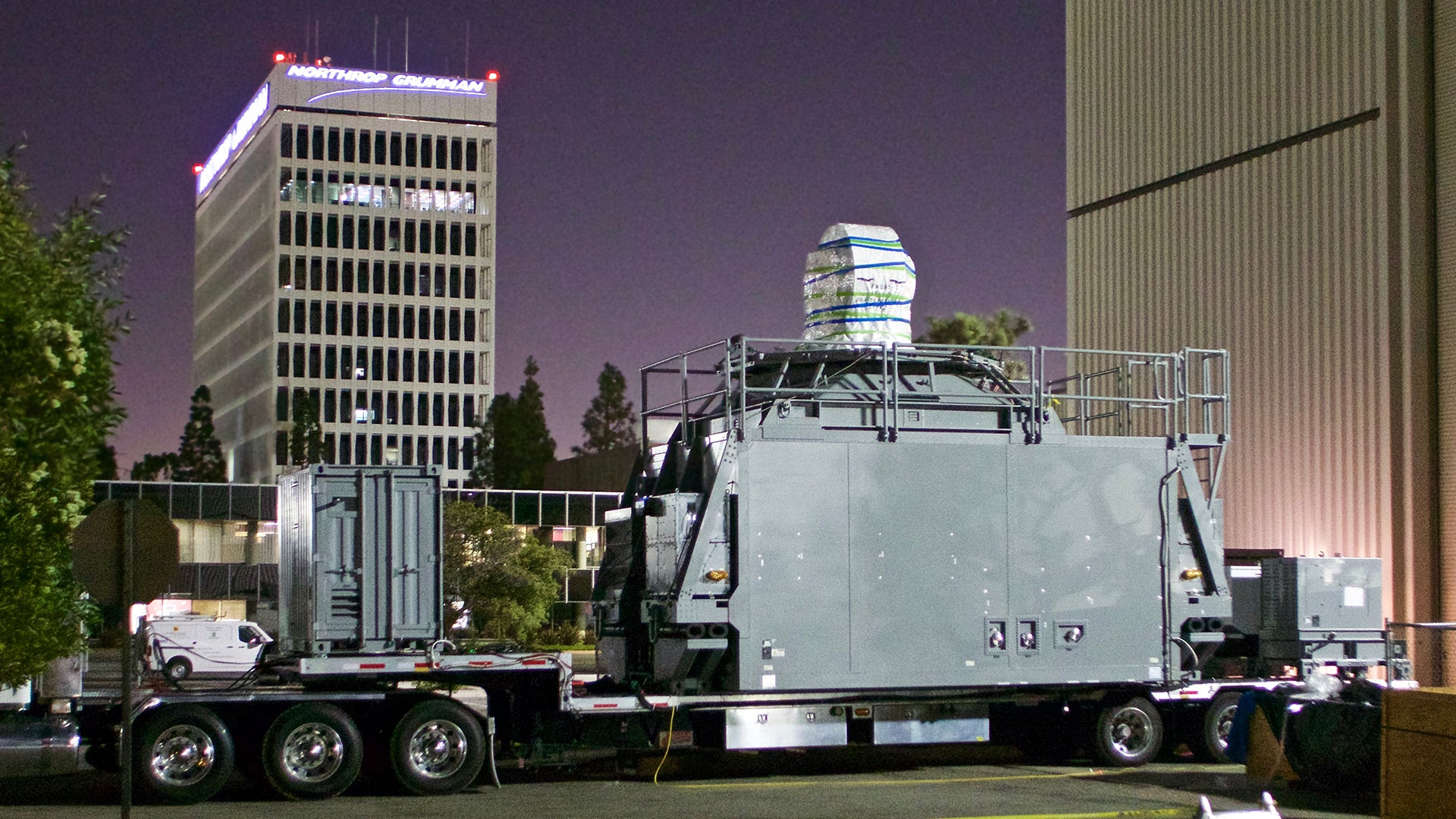Less than a day ago, The War Zone reported on a mysterious and very large object related to a “U.S. Navy demonstration program” that was being shipped by Northrop Grumman from the relatively small marine in Redondo Beach to San Diego. Now, as the object is set to be transported via truck to the pier, we know what it is. It is a high-energy laser system that we can say with near certainty is part of the Solid-State Laser Technology Maturation (SSL-TM) program that Northrop Grumman won the contract for in 2015.
SSL-TM looks to deliver a “shipboard laser with a beam power of up to 150kW, which would provide increased effectiveness against small boats and UAVs [unmanned aerial vehicles],” according to a review of Navy directed energy projects that the Congressional Research Service published in September 2019. “In January 2018, the Navy announced that it intended to install the SSL-TM laser on the newly built amphibious ship USS Portland (LPD-27). Sea testing of SSL-TM on the Portland is scheduled for the fourth quarter of FY2019.”
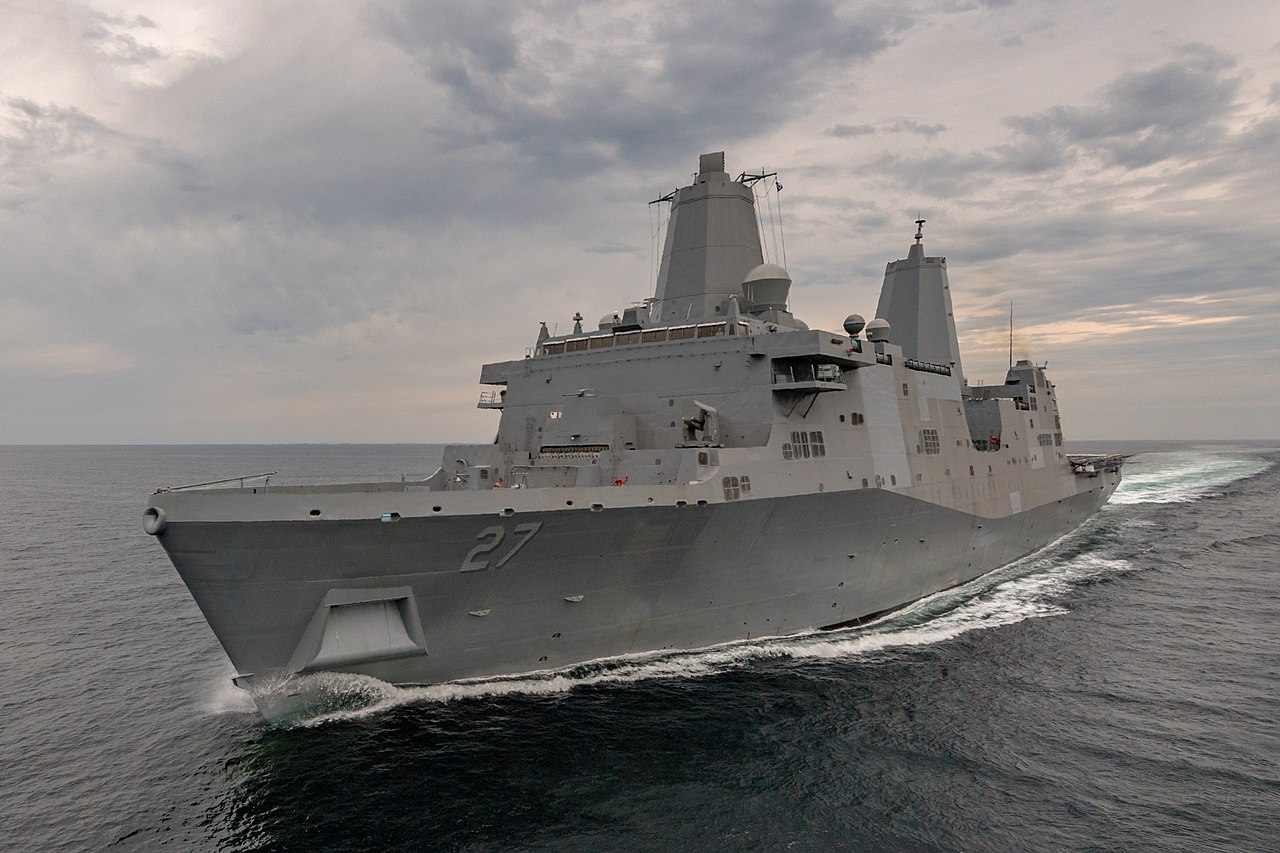
Portland is homeported in San Diego, which is where the laser is reportedly headed, and the ship was in port as of Sept. 26, 2019, according to the Navy. The 2019 Fiscal Year ended on Sept. 30, 2019, which could indicate a slight delay in the schedule. Otherwise, the dates, the ownership of the system, the “demonstration program” description, and the likely destination all seem to line up near perfectly with the SSL-TM program.
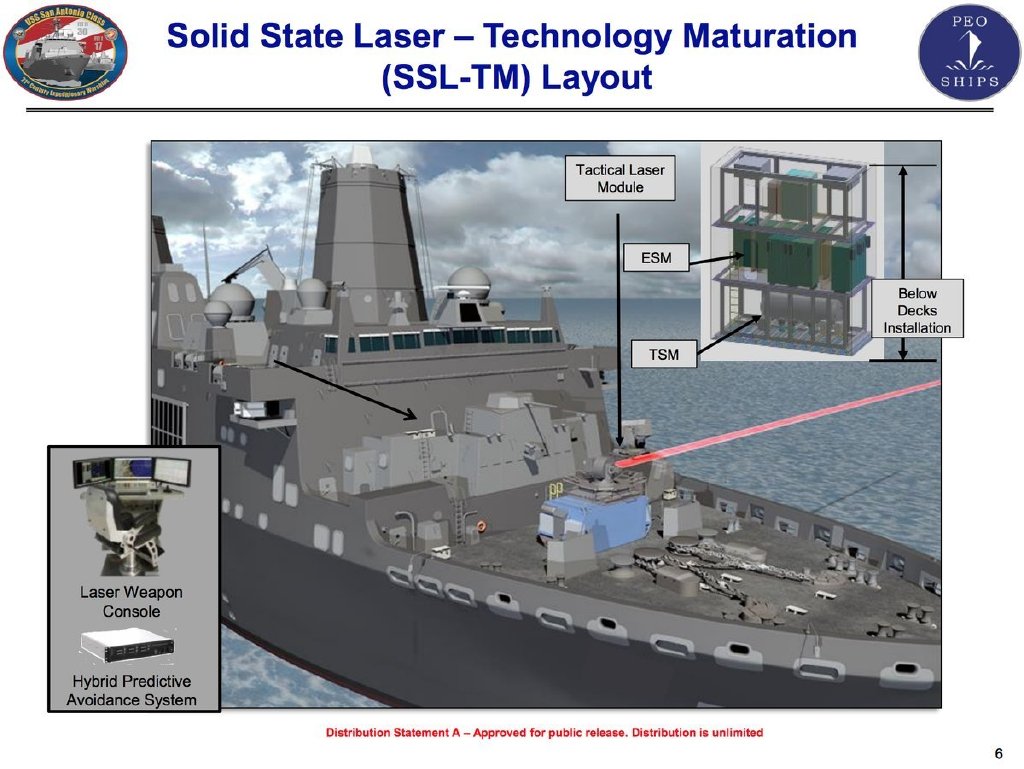
The Navy had originally planned to install the prototype SSL-TM system on the decommissioned Spruance class destroyer USS Paul F. Foster, which now serves as the service’s designated Self Defense Test Ship, before shifting the at-sea testing to Portland. As such, much of the original documentation describes the system in relation to the ex-Foster.
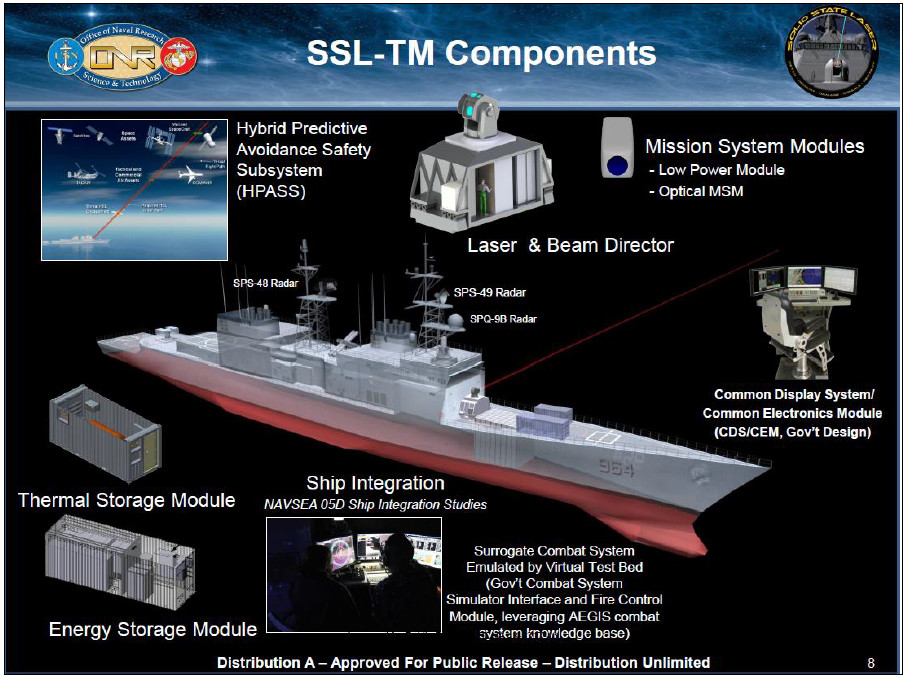
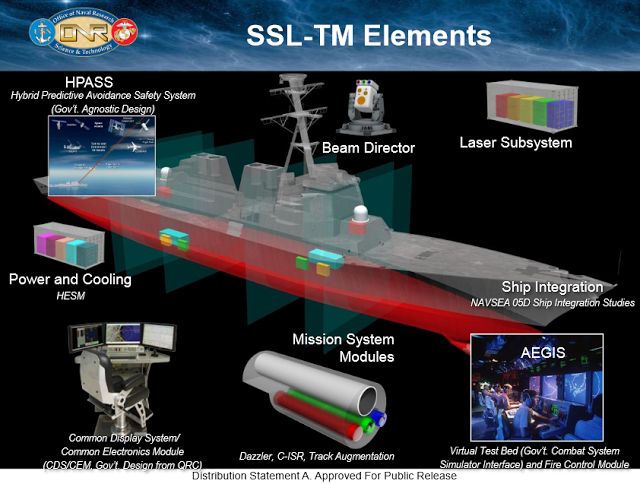
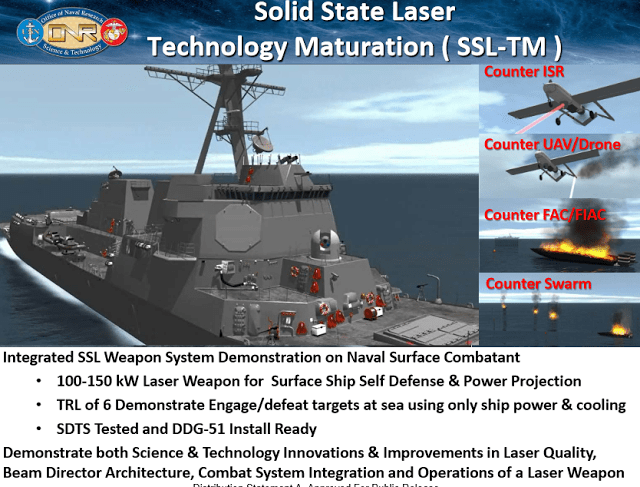
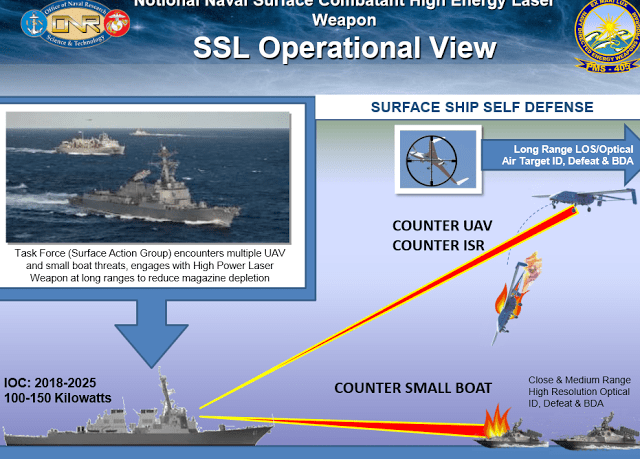

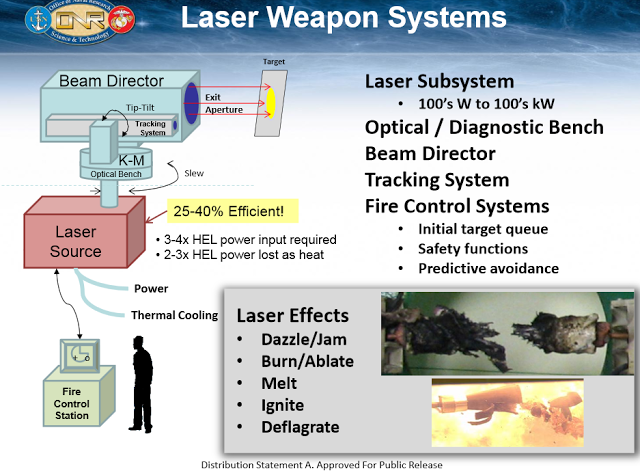
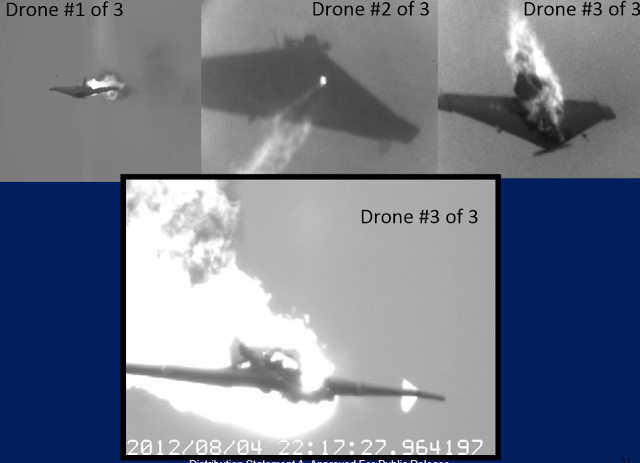
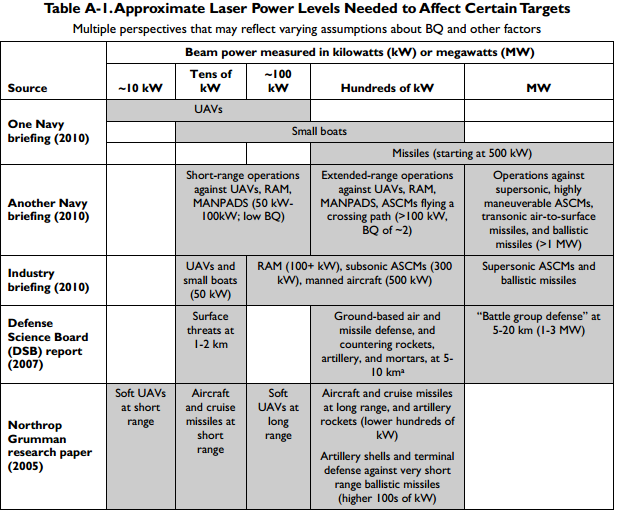
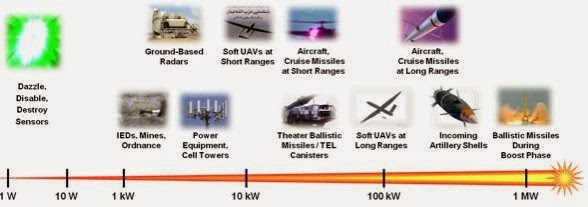

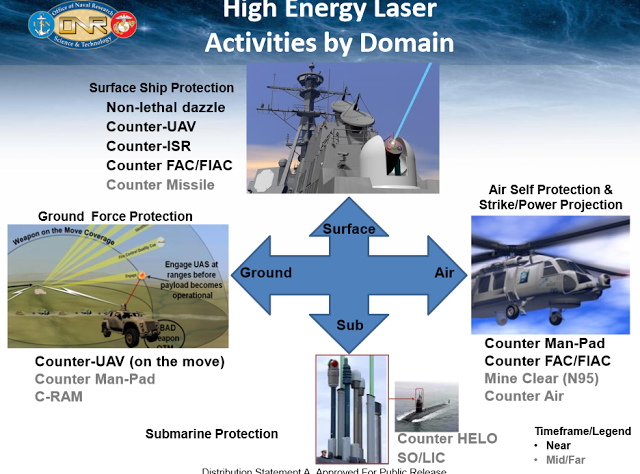
As for the SSL-TM demonstrator itself, the emitter/beam director that sits atop the system, and the platform that surrounds it, is very similar to the design shown in previous concept art. It also looks like a streamlined version of the Solid-State Laser Testbed, or SSLT, which the Army tested a number of years ago at White Sands Missile Range in New Mexico.
This isn’t all that surprising as that too was a Northrop Grumman directed energy program. SSLT’s beam director was repurposed from a prior initiative called Mobile Tactical High Energy Laser (MTHEL), which TRW had first begun to develop as part of a cooperative U.S.-Israeli program in 1996. Northrop Grumman acquired TRW in 2002.
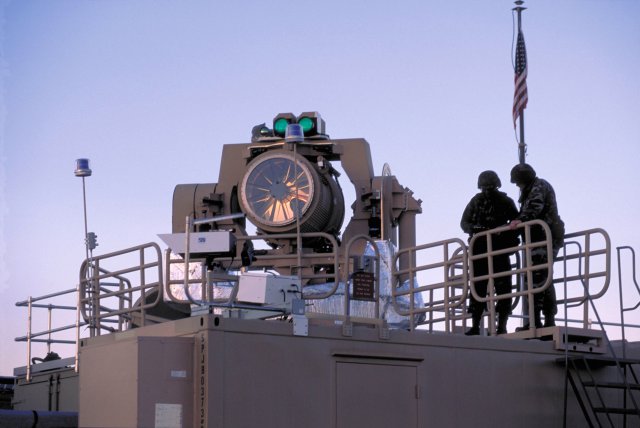
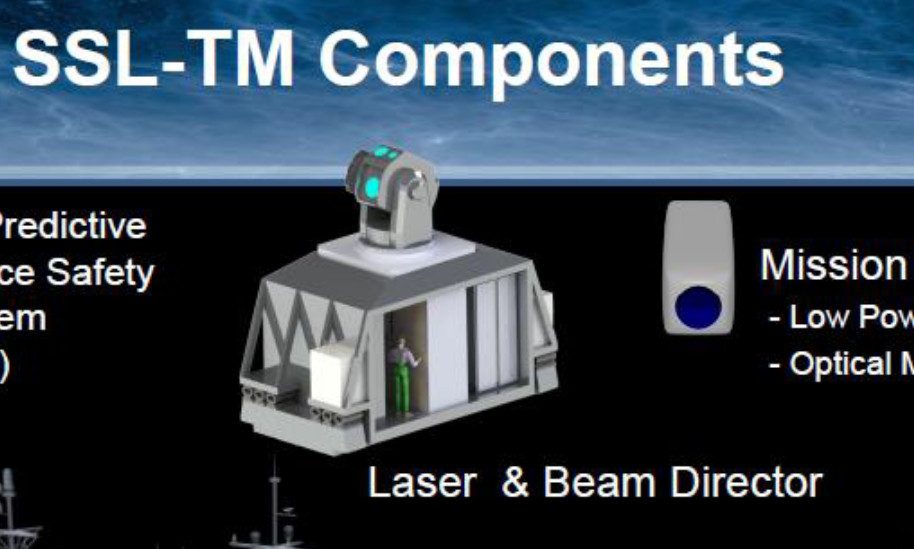
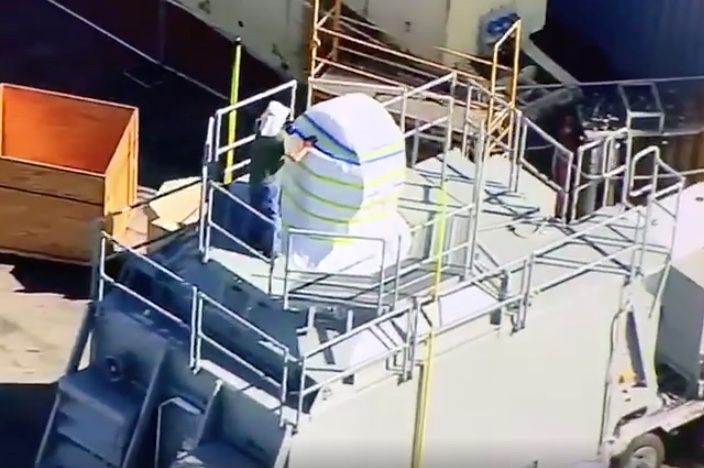

SSL-TM is an outgrowth of the Navy’s past experience with the AN/SEQ-3 Laser Weapon System (LaWS), another Northrop Grumman project. This system was the service’s first-ever operational laser weapon and was fitted to the USS Ponce, an Austin class landing platform dock that subsequently became a sea base testbed in the Middle East. You can read more about that ship and the AN/SEQ-3 in a past War Zone feature.

However, SSL-TM aims to be significantly more powerful. Where the AN/SEQ-3 had a 30-kilowatt power rating, the new system will be in the 150-kilowatt class.
The Navy also intends for the SSL-TM program to be one step toward even more capable systems as part of its larger Navy Laser Family of Systems effort. Lessons learned from Northrop Grumman’s demonstrator, together with other systems also in development, are all set to feed into the Surface Navy Laser Weapon System Increment 2 program.
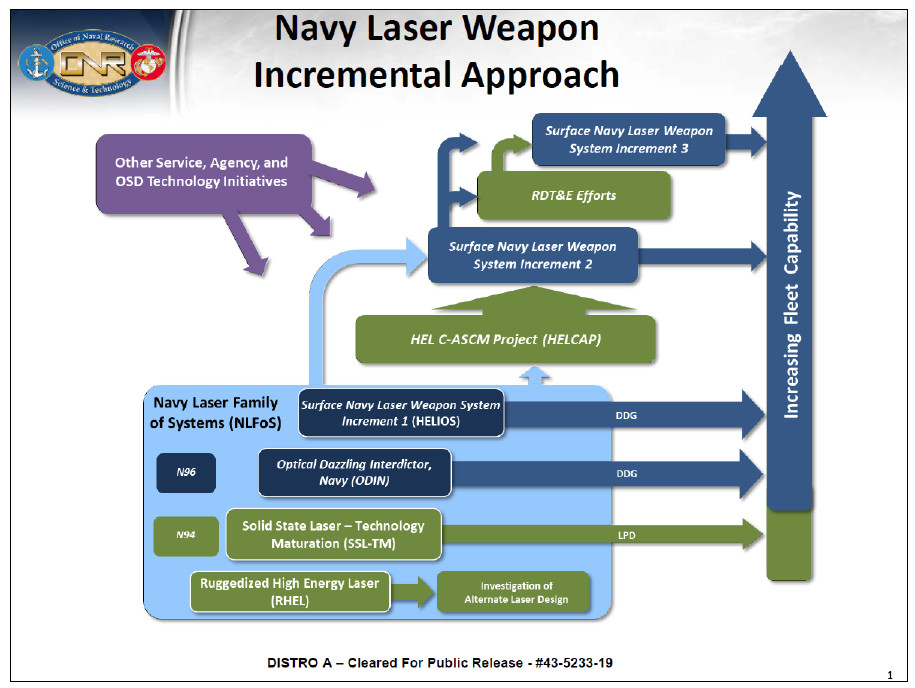
The SSL-TM already represents a huge step forward in power growth and capability over the earlier LaWS. With Northrop Grumman’s demonstrator now looking to be headed for San Diego and the USS Portland, it’s certainly an exciting time for the Navy’s directed energy efforts.
Update: 1:55AM PDT—
Freelance photojournalist and regular contributor here at The War Zone, Matt Hartman, got some photos of the laser system prior to its voyage to the Redondo Beach marina. The system is surprisingly compact considering its supposed capabilities and maritime hardening. It seems readily transportable via road. It’s interesting that such an elaborate transportation scheme was used to get it to San Diego—that is unless it heads to one of the Channel Islands for testing first.
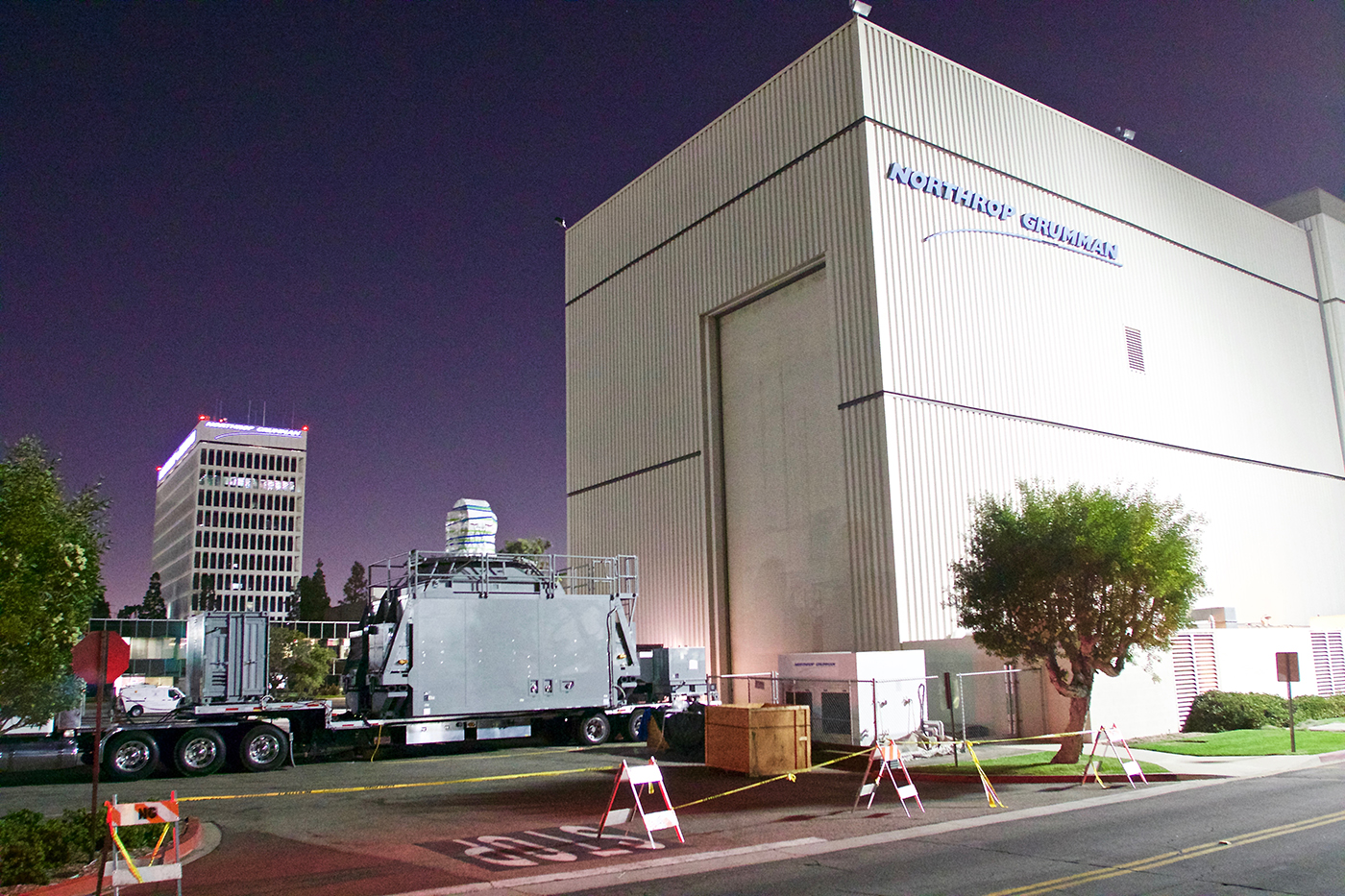
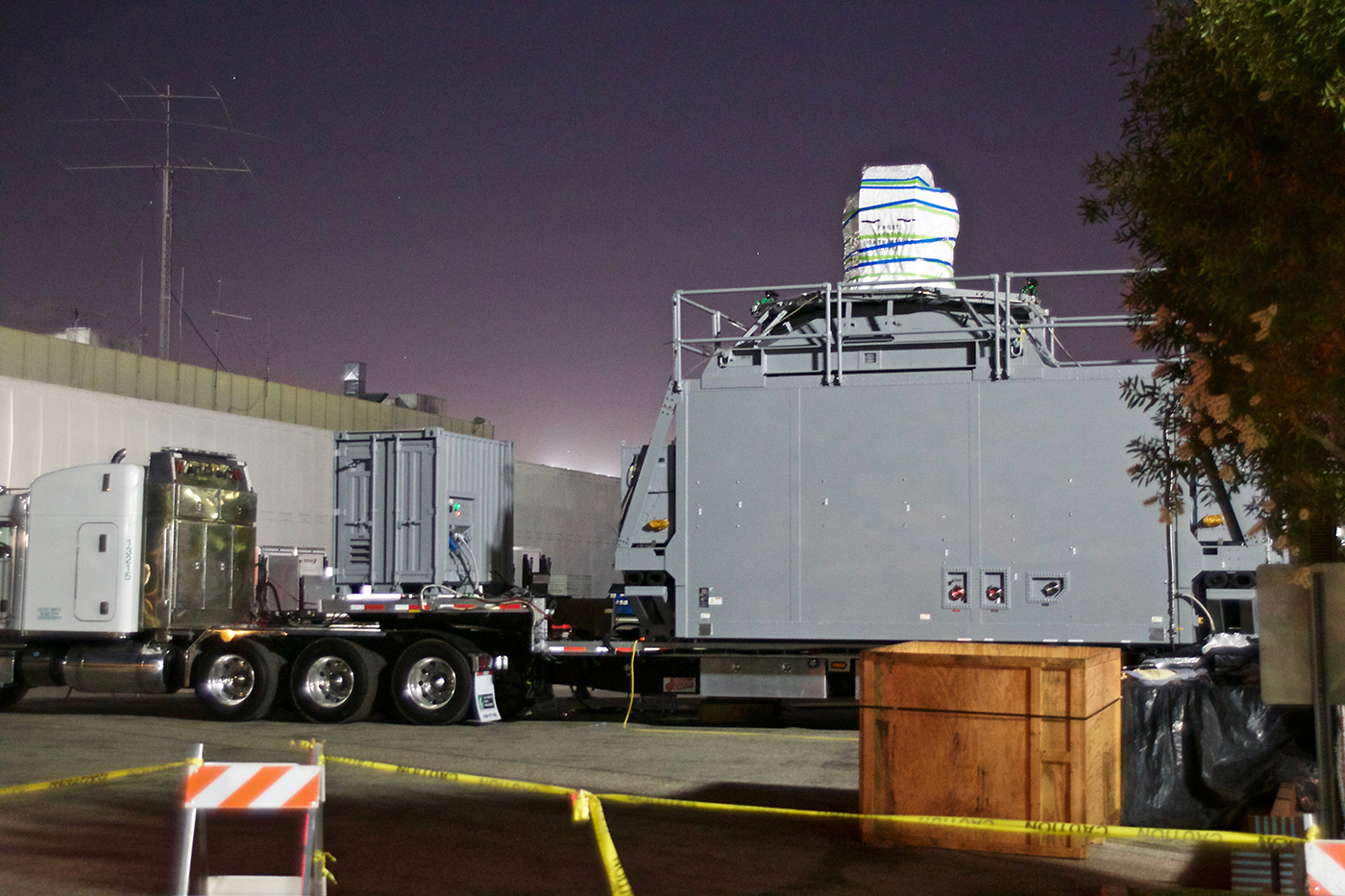

Contact the author: Tyler@thedrive.com
